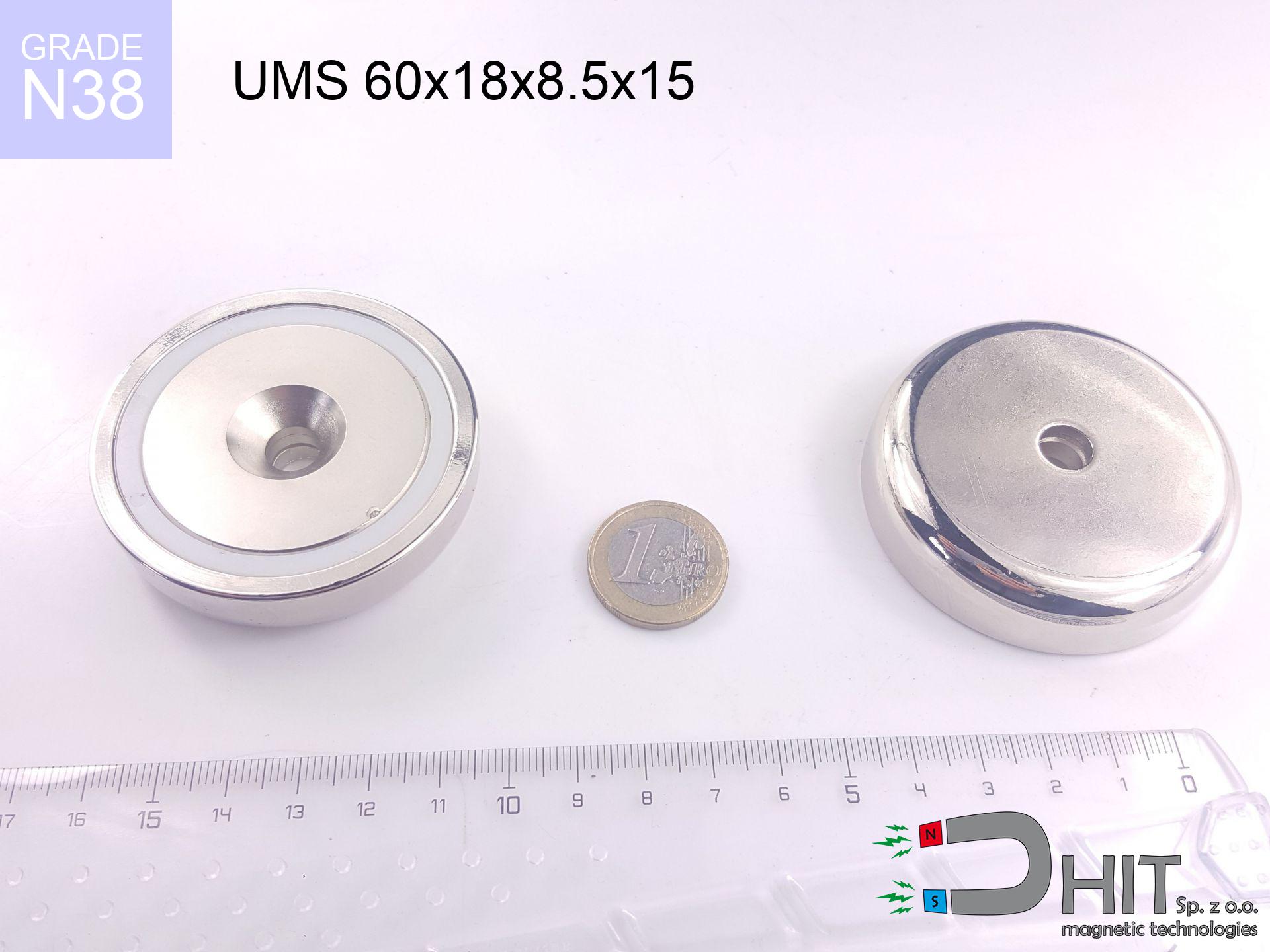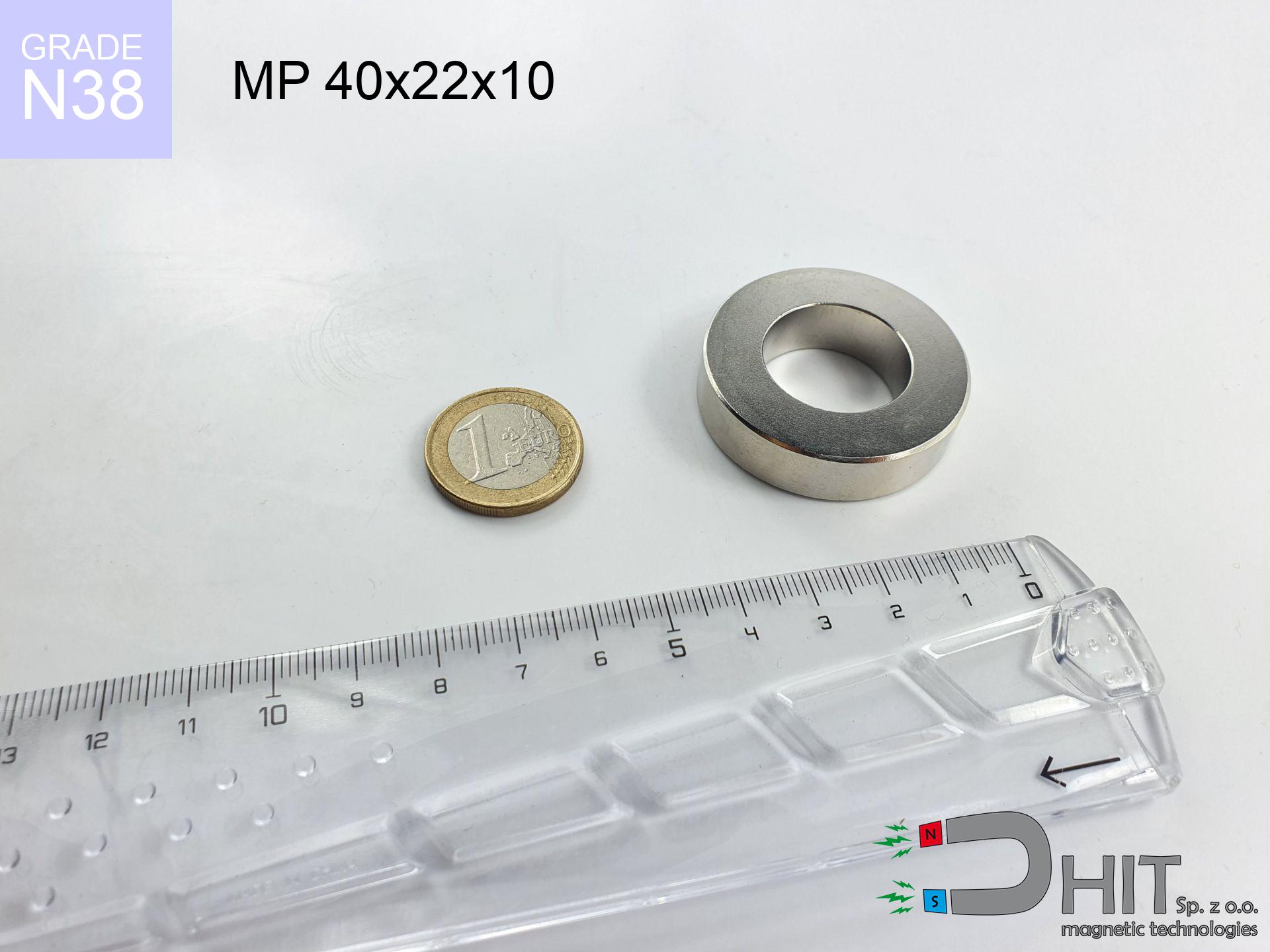UMS 60x18x8.5x15 / N38
conical magnetic holder
catalog number 220404
GTIN: 5906301814238
diameter Ø
60
mm [±0,1 mm]
cone dimension Ø
18x8.5
mm [±0,1 mm]
height
15
mm [±0,1 mm]
magnetizing direction
↑ axial
capacity ~
112.00 kg / 1098.34 N
max. temperature
≤ 80
°C
catalog number 220404
GTIN: 5906301814238
diameter Ø
60 mm [±0,1 mm]
cone dimension Ø
18x8.5 mm [±0,1 mm]
height
15 mm [±0,1 mm]
magnetizing direction
↑ axial
capacity ~
112.00 kg / 1098.34 N
max. temperature
≤ 80 °C
62.78 ZŁ gross price (including VAT) / pcs +
51.04 ZŁ net price + 23% VAT / pcs
bulk discounts:
need more quantity?Don't know what to buy?
Call us tel: +48 22 499 98 98 or get in touch via form on our website. You can check the strength and the shape of magnet in our magnetic calculator force calculator
Orders placed by 2:00 PM will be shipped on the same business day.
Specification: conical magnetic holder 60x18x8.5x15 / N38 ↑ axial
Magnetic properties of the material N38
Physical properties of sintered neodymium magnets Nd2Fe14B
Shopping tips
Advantages and disadvantages of neodymium magnets NdFeB.
Apart from immense power, neodymium magnets have the following advantages:
- They do not lose strength over time. After 10 years, their power decreases by only ~1% (theoretically),
- They are highly resistant to demagnetization by external magnetic sources,
- By applying a shiny coating of nickel, gold, or silver, the element gains an aesthetic appearance,
- They have very high magnetic induction on the surface of the magnet,
- Thanks to their high temperature resistance, they can operate (depending on the form) even at temperatures up to 230°C and above...
- The ability for precise shaping or customization to specific needs – neodymium magnets can be produced in many variants of shapes or sizes, which amplifies their universality in usage.
- Key role in the industry of new technologies – find application in HDD drives, electric drive mechanisms, medical devices or very highly developed apparatuses.
Disadvantages of neodymium magnets:
- They are fragile when subjected to a powerful impact. If the magnets are exposed to impacts, we recommend using magnets in a steel housing. The steel housing in the form of a holder protects the magnet from impacts and at the same time increases its overall strength,
- Magnets lose their power due to exposure to high temperatures. In most cases, when the temperature exceeds 80°C, these magnets experience permanent reduction in strength (although it is worth noting that this is dependent on the form and size of the magnet). To avoid this problem, we offer special magnets marked with the [AH] symbol, which exhibit high temperature resistance. They can operate even at temperatures as high as 230°C or more,
- Due to their susceptibility to corrosion in a humid environment, we recommend using waterproof magnets made of rubber, plastic, or other moisture-resistant materials when using them outdoors,
- The use of a cover - a magnetic holder is recommended due to the limited production capabilities of creating threads or complex shapes in the magnet
- Possible danger to health from tiny fragments of magnets pose a threat, if swallowed, which is crucial in the aspect of protecting young children. Furthermore, tiny parts of these products can complicate diagnosis when they are in the body.
Exercise Caution with Neodymium Magnets
Magnets made of neodymium are fragile as well as can easily crack and get damaged.
Neodymium magnetic are delicate as well as will crack if allowed to collide with each other, even from a distance of a few centimeters. Despite being made of metal as well as coated with a shiny nickel plating, they are not as hard as steel. In the case of a collision between two magnets, there can be a scattering of small sharp metal fragments in different directions. Protecting your eyes is essential.
Do not bring neodymium magnets close to GPS and smartphones.
Magnetic fields interfere with compasses and magnetometers used in navigation for air and sea transport, as well as internal compasses of smartphones and GPS devices.
Magnets will attract to each other, so remember not to allow them to pinch together without control or place your fingers in their path.
Neodymium magnets jump and also touch each other mutually within a radius of several to almost 10 cm from each other.
Dust and powder from neodymium magnets are highly flammable.
Do not attempt to drill into neodymium magnets. Mechanical processing is also not recommended. If the magnet is crushed into fine powder or dust, it becomes highly flammable.
People with pacemakers are advised to avoid neodymium magnets.
Neodymium magnets generate very strong magnetic fields that can interfere with the operation of a pacemaker. This is because many of these devices are equipped with a function that deactivates the device in a magnetic field.
Neodymium magnets are over 10 times stronger than ferrite magnets (the ones in speakers), and their power can surprise you.
To use magnets properly, it is best to familiarize yourself with our information beforehand. This will help you avoid significant harm to your body and the magnets themselves.
The magnet is coated with nickel. Therefore, exercise caution if you have an allergy.
Studies clearly indicate a small percentage of people who suffer from metal allergies such as nickel. An allergic reaction often manifests as skin redness and rash. If you have a nickel allergy, you can try wearing gloves or simply avoid direct contact with nickel-plated neodymium magnets.
Do not place neodymium magnets near a computer HDD, TV, and wallet.
Strong magnetic fields emitted by neodymium magnets can destroy magnetic storage media such as floppy disks, credit cards, magnetic ID cards, cassette tapes, video tapes, or other devices. They can also damage televisions, VCRs, computer monitors, and CRT displays. You should especially avoid placing neodymium magnets near electronic devices.
Do not give neodymium magnets to youngest children.
Neodymium magnets are not toys. Be cautious and make sure no child plays with them. Small magnets can pose a serious choking hazard. If multiple magnets are swallowed, they can attract to each other through the intestinal walls, causing severe injuries, and even death.
Neodymium magnets can become demagnetized at high temperatures.
Even though magnets have been found to maintain their efficacy up to temperatures of 80°C or 175°F, it's essential to consider that this threshold may fluctuate depending on the magnet's type, configuration, and intended usage.
Please read the article - What danger lies in neodymium magnets? You will learn how to handle them properly.



![magnetic separator 18x100 [2xM5] / N42 magnetic separator 18x100 [2xM5] / N42](https://cdn3.dhit.pl/graphics/products/sm-18x100-2xm5-pem.jpg)
![magnetic separator 32x150 [2xM8] / N42 magnetic separator 32x150 [2xM8] / N42](https://cdn3.dhit.pl/graphics/products/sm-32x150-2xm8-xus.jpg)



